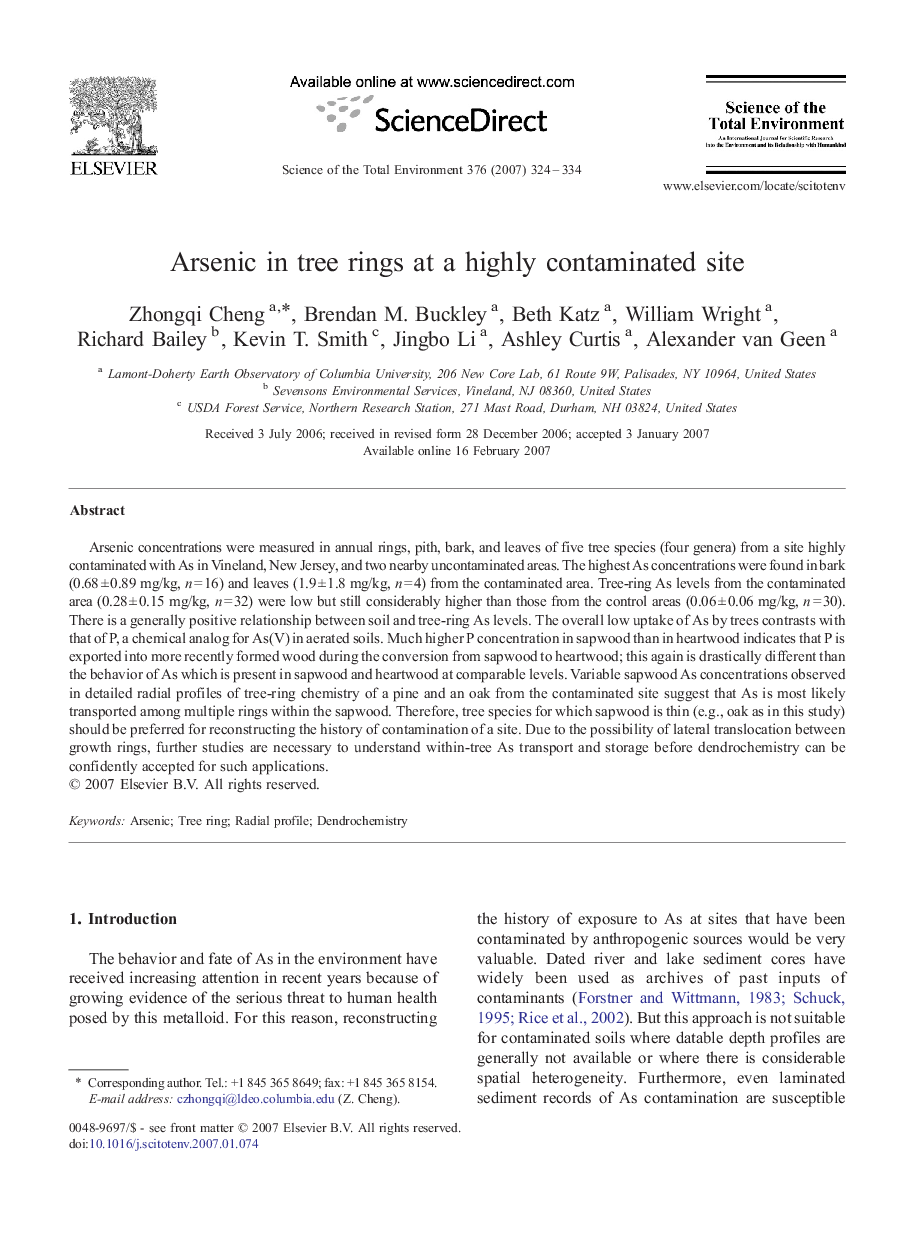| Article ID | Journal | Published Year | Pages | File Type |
|---|---|---|---|---|
| 4433499 | Science of The Total Environment | 2007 | 11 Pages |
Arsenic concentrations were measured in annual rings, pith, bark, and leaves of five tree species (four genera) from a site highly contaminated with As in Vineland, New Jersey, and two nearby uncontaminated areas. The highest As concentrations were found in bark (0.68 ± 0.89 mg/kg, n = 16) and leaves (1.9 ± 1.8 mg/kg, n = 4) from the contaminated area. Tree-ring As levels from the contaminated area (0.28 ± 0.15 mg/kg, n = 32) were low but still considerably higher than those from the control areas (0.06 ± 0.06 mg/kg, n = 30). There is a generally positive relationship between soil and tree-ring As levels. The overall low uptake of As by trees contrasts with that of P, a chemical analog for As(V) in aerated soils. Much higher P concentration in sapwood than in heartwood indicates that P is exported into more recently formed wood during the conversion from sapwood to heartwood; this again is drastically different than the behavior of As which is present in sapwood and heartwood at comparable levels. Variable sapwood As concentrations observed in detailed radial profiles of tree-ring chemistry of a pine and an oak from the contaminated site suggest that As is most likely transported among multiple rings within the sapwood. Therefore, tree species for which sapwood is thin (e.g., oak as in this study) should be preferred for reconstructing the history of contamination of a site. Due to the possibility of lateral translocation between growth rings, further studies are necessary to understand within-tree As transport and storage before dendrochemistry can be confidently accepted for such applications.
